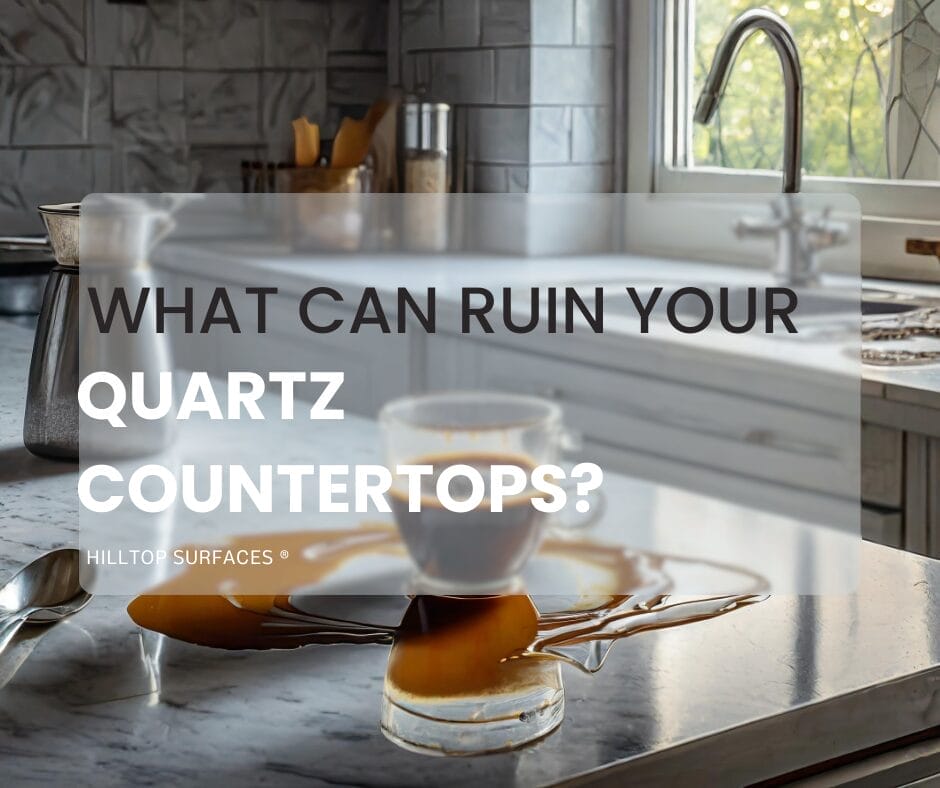Mistakes to Avoid When Cleaning and Sealing Your Stone Countertops
Stone Countertops, whether they’re made of granite, marble, or quartz, offer both elegance and durability, but maintaining their appearance requires a bit of attention. Cleaning and sealing these surfaces properly are essential for protecting them from stains, scratches, and discoloration. Without the right care, even the toughest stone can start to show signs of wear. The natural porosity of some stones makes them more vulnerable to absorbing liquids and oils, which can lead to staining. Similarly, improper sealing can leave surfaces susceptible to dirt buildup and bacteria.
Regular cleaning helps prevent grime and spills from becoming permanent, while sealing acts as a protective barrier, ensuring the stone remains in pristine condition. By understanding the best practices for cleaning and sealing, you’ll be able to maintain your countertops’ shine and ensure they stay in top form for years to come.
This blog will highlight common mistakes people make when cleaning and sealing stone countertops. Avoiding these mistakes will help you keep your stone countertops looking fresh and beautiful.
What You Should Never Do When Cleaning Stone Countertops?
1.Using Abrasive Cleaning Products
Abrasive cleaning products, like scouring pads or powders, may seem effective, but they can scratch and damage the surface of your Stone Countertops. These Stone Cleaners can strip away the protective sealant, leaving the stone vulnerable to stains and wear. You should also avoid using cleaners with ammonia on Natural Stone surfaces such as granite and marble. Ammonia can make these stones lose their color and shine over time.
What Should You Do?
- Choose a pH-balanced cleaner specifically designed for stone surfaces. They help you lift dirt and stains without harming the stone.
- For everyday stone cleaning, you can use a mixture of warm water and a small amount of mild dish soap. This solution is gentle and won’t damage the surface.
- Always use a soft cloth or sponge to clean the stone’s surface whether it’s marble or Granite countertops. Microfiber cloths are particularly good at removing dust and dirt without scratching the surface.

Granite Countertops
2. Ignoring Hidden Spots Beneath Countertop Items
We usually focus on cleaning the visible areas of our stone countertops, but the spots underneath items like blenders, mixers, coffee makers, cutting boards, and dish racks often get ignored. Ignoring these hidden areas can lead to moisture, stains, and even mold buildup over time. Items like toasters and dish racks often accumulate water spots, and spills. If not cleaned properly, these can seep into the stone and cause stains or discoloration.
What Should You Do?
- Periodically move everything off your countertops.
- Clean these hidden spots with a gentle, stone-safe cleaner and a soft cloth.
- Ensure that moisture or residue doesn’t stay in one place.
3. Using the Wrong Cleaning Products
Some Stone Cleaners can damage the sealant on your Countertops, making them more likely to get scratched, or stained by spills. Some household cleaners, especially those with bleach, vinegar, or ammonia, aren’t safe for Natural Stone Countertops. These cleaners can wear down the surface, making it dull and causing the stone to lose its shine and smooth finish. Always avoid using glass cleaners, and disinfecting wipes as they can cause Permanent damage to Granite Countertops.
What Should You Do?
- Always check that any cleaner you use is marked as safe for stone.
- Choose pH-neutral, stone-specific marble, granite or Quartz countertop cleaners.
- For quick daily cleaning, warm water with a small amount of mild dish soap works well.

Countertop with Spills
4. Not cleaning spills Immediately
If spills like soda, wine, coffee, or citrus are left on the countertop surface, they can damage or stain the stone. Granite and Marble Countertops are porous and can quickly soak up liquids if they’re not cleaned immediately. If spills and stains aren’t cleaned up quickly, they can soak into the porous surface of the stone and cause discoloration and long-term damage.
What Should You Do?
- Clean up spills as soon as they happen.
- Use a soft cloth or paper towel to blot the liquid.
- Wipe the area with a gentle cleaner made of stone to remove any leftover residue.
Mistakes to Avoid While Sealing Your Stone Countertops
1. Sealing Stones Without Proper Cleaning
One of the biggest mistakes when sealing countertops is failing to clean them thoroughly first. Stone surfaces can accumulate oils, dirt, and other residues, which will prevent the sealant from sticking properly on the stone. Sealing over these particles can result in uneven protection and dull spots.
What Should You Do?
- Clean your countertops with a mild and non-abrasive cleaner to remove all dirt.
- Dry the surface completely to avoid any moisture beneath the sealant.
- Clean any stains or build-up before sealing.
2. Using the Wrong Sealant
Using the wrong type of sealant for your Stone Countertops can lead to ineffective protection and long-term damage. Different types of stone, such as granite, marble, and quartz, each have unique characteristics and varying levels of porosity. Using stone sealers that aren’t designed for your specific stone can lead to several issues. It’s always a bad idea to use a granite sealer on a marble surface as it can cause discoloration.
What Should You Do?
- Before using a sealant, identify Your Stone Type.
- Check whether your stone requires sealing or not.
For instance, Black Granite is less porous than other granite stones. To check if your black granite countertops require sealing, put a few water drops on its surface and see the time it takes to soak into the stone. If the sealant takes longer than 30 minutes to soak in, your Countertops might not need sealing.
- Select a sealant that is specifically designed for your stone.
- Always read the manufacturer’s guidelines or product labels.

Countertop with Excessive Sealing
3. Excessive Sealing of Stone Countertops
While sealing your countertops is crucial for protection, over-sealing can cause more harm than good. It’s recommended to apply sealant only when needed. The reason is that if too much sealant builds up on the countertops, it can make the surface look dull. To avoid this, wipe off any extra sealant with a dry towel.
4. Not Applying Sealant Correctly
While applying the Stone Sealers, you need to ensure that the sealer is applied evenly covering the whole surface. Let the sealant soak in properly. Now wipe away any extra sealant with a clean cloth. After sealing, recheck to find if you have accidentally missed any spot on the surface that needs to be sealed.
5. Not Using Sealers That Are Safe to Use
Though stone sealers can help protect natural stones from stains and spills, you should choose one that doesn’t contain toxic ingredients and is completely safe to use. Toxic sealers have hazardous chemicals that are dangerous to your health.
Choosing the right Stone Sealer that is safe to use has several advantages over toxic sealers. Non-toxic stone sealers are safe for pets and children. They don’t have strong chemical odors that can linger in your home. When you use non-toxic sealers, you are not required to wear a mask or gloves.
Conclusion:
Following the right cleaning and sealing practices can make a big difference in keeping your Countertops beautiful and long-lasting. Regular cleaning removes dirt and spills that can damage stone surfaces over time, while proper sealing protects against stains, moisture, and everyday wear. Use a gentle, non-abrasive cleaner and seal only when necessary to maintain a smooth, natural finish. By giving your countertops a little care and attention, you’ll help them stay in top condition, keeping them both functional and attractive for years.
Looking for quality stones that bring your vision to life? Hilltop Surfaces, one of Canada’s top stone suppliers, offers a wide range of both natural and engineered stone to suit any project. Our team is here to help you find the perfect match, no matter the style or size. Ready to get started? Reach out today for a quote and see the difference true quality can make.












